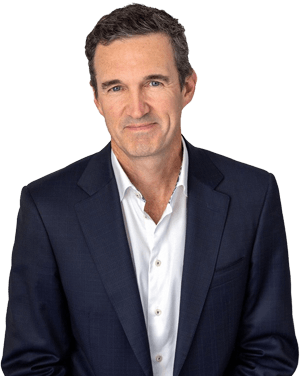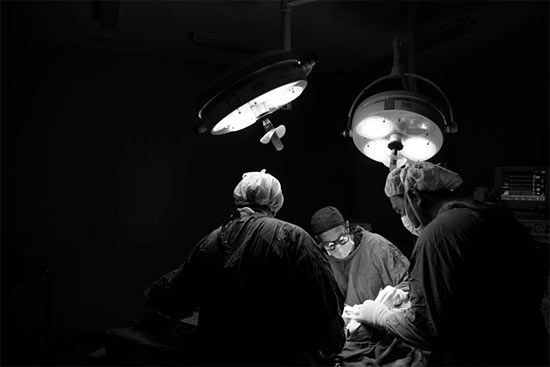Breast Lift (Mastopexy)
A procedure to alter the shape and position of the breasts by either surgically lifting and reshaping the breast tissue, inserting breast implants to add volume, or a combination of both.
What is breast lift (mastopexy) surgery?
Breasts change shape and position for many reasons throughout a woman’s life – pregnancy, breast-feeding, weight change, and the natural effects of ageing and gravity can all contribute. The goal of breast lift (mastopexy) surgery is to reposition and re-shape the breast tissue on the chest, either by tightening and remodelling the breast tissue, inserting implants to add volume, or a combination of both.
All of these procedures will result in scars on the breast, but their size and location will depend upon the technique required to best manage your individual circumstances and desired result.
What are the benefits of this procedure?
In those women whose breast volume remains sufficient, a breast lift (mastopexy) procedure can relieve symptoms related to a bra having to do the ‘heavy lifting’ to support the breast. These symptoms can include back, neck and shoulder pain, as well as poor posture, deep strap marks, and difficulty exercising.
In those whose volume is now less than what they wish, often as a result of natural volume loss after breast-feeding or deliberate weight loss, then the addition of volume using breast implants can increase the fullness of the breast, eliminate the need for inserts or padded bras, and is more fully appreciated in swimwear or summer clothing.
Combining both procedures can significantly alter the shape and appearance of the breasts.
Is Mr Morgan experienced in breast lift (mastopexy) surgery?
Mr Morgan has had many years of experience in performing breast lift (mastopexy) procedures. He has also undertaken additional training overseas in breast surgery techniques, allowing him to bring both an experienced artistic and technical viewpoint to these procedures. With a passion for this type of surgery, you can be assured that your surgeon is not only experienced and qualified, but also dedicated to achieving results.
At your consultation, he will be able to show photos of his other patients who have undergone this procedure to give a sense of what change can be achieved. These results are specific to these patients, and may not accurately reflect the types of result you may achieve. All results can vary for a number of reasons, including differences in genetics and original appearance, as well as differences in healing and recovery. Despite all care being taken, complications can and do occur, and can also affect the final result. Occasionally, revisional surgery is required.


How is it performed?
All types of breast lift (mastopexy) surgery result in scarring on the breasts. The extent and placement of these scars will be determined by the amount of lift required, and the current quality of the skin and breast tissue. This will be assessed and discussed at your consultations.
Breast lift (mastopexy) surgery is performed under general anaesthesia and can require an overnight stay in hospital to ensure your comfort and safety. The wounds are closed with dissolving sutures, and are covered by waterproof dressings, allowing you to shower as soon as you feel comfortable. You will be asked to wear a soft surgical bra for the first three weeks to provide additional comfort and support, but also to allow your breasts to heal properly in their new position.

How long will I need to recover?
Everyone will have a different experience and will recover from their surgery differently. Although uncommon, complications can also occur and can result in a longer recovery time. Generally, discomfort is limited and well-controlled with tablet pain relief medication. You will initially sleep on your back for the first couple of weeks, and may sleep propped up on a few pillows to make this easier. Your breasts will swell and become bruised in the first few days, before beginning to recover. Often, the breasts can feel a little numb, or over-sensitive, due to nerve irritation during the recovery phase. This is usually temporary, but permanent changes in the nerves of the breast can occur.
Gentle walking is encouraged as soon as you feel well. Typically, most patients will recover enough to return to social activity and office-based work after two to three weeks. Return to exercise is allowed from four weeks, and activity is usually unrestricted after six weeks. Swelling can often persist for many weeks after surgery until the final size and shape of the breasts becomes apparent.
Specific Risks and Complications
Breast lift (mastopexy) surgery has several potential specific risks:
- Bleeding, infection, poor quality or visible scars, prolonged wound healing, asymmetry, permanent numbness in the breasts or nipples, dissatisfaction with the cosmetic outcome, need for revisional surgery
If breast implants are also used:
- Capsular contracture (tightening and hardening of the scar around the implant)
- Implant rupture: the breast implant outer shell can sometimes tear or rupture. Modern breast implants contain a semi-solid silicone gel that has the consistency of set jelly, so will not flow out into your body after rupture, and is usually well-contained by the scar capsule around the implant. Modern breast implants have a rupture rate of less than 1% per year.
- ALCL (anaplastic large-cell lymphoma): this is a rare type of cancer that can develop in the scar capsule or fluid around a breast implant. Although there has been no direct link established, it appears to be associated with the texturing that is used on the outer surface of some implants, with risks varying from 1 in 2500 to 1 in 60000, depending on the implant type. Smooth surface implants do not appear to be associated with this condition, and these are now the most commonly used implant type in order to avoid this risk.
- Breast implants are not considered lifetime devices, and will generally require replacement every 10-20 years, depending on whether they are causing symptoms, maintaining the desired cosmetic result, or remain intact. Implant replacement or exchange requires another surgical procedure and the associated recovery time and post-operative risks.
This is not an exhaustive list of potential risks. Every patient responds differently to surgery and anaesthesia, and can heal and recover differently. Individual results can vary. The results experienced by one patient do not always reflect the results other patients may achieve. Potential outcomes and possible variations will be discussed during your consultations
All Surgical Procedures Carry Risks
Before proceeding, you should seek a second opinion from an appropriately qualified medical practitioner.
Individual results may vary due to a number of factors, including genetics, and variations in healing and recovery, and the potential for complications. The outcomes experienced by one person do not necessarily reflect the outcomes that other people may experience. Potential outcomes and possible variations will be discussed during your consultations
Cosmetic surgery is real surgery, and will most often require a general anaesthetic. All surgery will require a period of recovery before returning to normal activity, as outlined in the particular procedure information. Although uncommon, complications can and do occur, and may affect the final result of your surgery. The potential risks will be discussed fully during your consultations, and you will have the opportunity to ask questions about the various risks in your particular circumstances. Risks may include the general risks of surgery, as well as the risks specific to the procedure, and include poor quality scarring, excessive bruising and swelling, infection, bleeding, pain, asymmetry, nerve injury, anaesthetic complications, drug reactions, unsatisfactory cosmetic outcomes, the need for further surgery, and permanent disability and death.
As a specialist plastic surgeon, Mr Morgan is appropriately trained and qualified to deal with complications of surgery, including the ability to admit you to hospital, if required.
Who should/should not consider breast lift (mastopexy) surgery?
Breast lift (Mastopexy)
All surgery entails an element of risk, and you should not make any decision regarding surgery at a time of stress. Being healthy and happy with your decision can increase the chances of achieving a result that you are pleased with. Smoking, a number of other medical conditions, and being overweight can make surgery unsafe. These, as well as any other risks, will be discussed with you at the time of your consultation.
If you would like more information, or to book an appointment, please contact us today.
